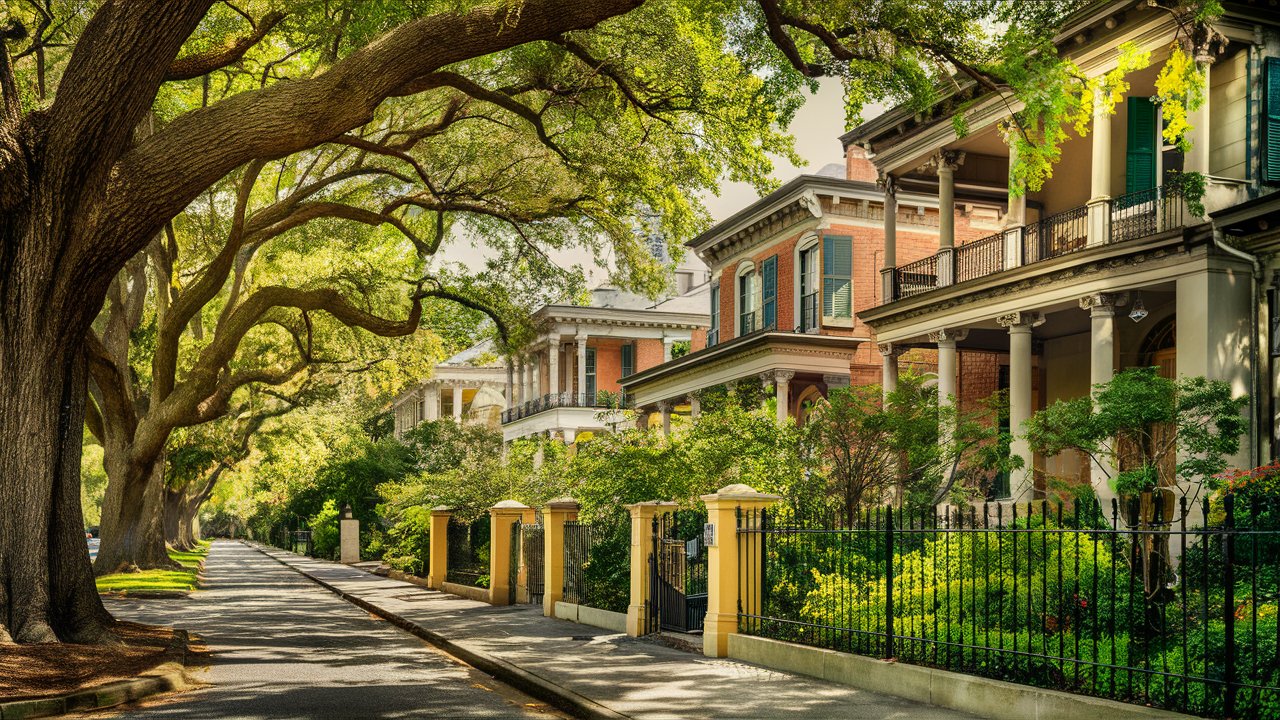When I think of New Orleans, the Garden District always comes to mind as my favorite spot. This serene and historic neighborhood is a world away from the bustling French Quarter, offering quiet, oak-lined streets filled with stunning mansions that tell stories of the 19th century elite. I cherish the afternoons spent wandering past majestic Greek Revival and Italianate homes, each with its own unique charm. Magazine Street always lures me in with its delightful boutiques and inviting cafes, while the eerie beauty of Lafayette Cemetery No. 1 adds a touch of Southern gothic mystique. For me, a ride on the St. Charles Avenue streetcar through this district is a must, providing a perfect blend of history and scenic beauty. If you ever find yourself in New Orleans, make sure you carve out time to explore the Garden District—you’ll fall in love with its enchanting allure just like I did. Have you ever thought about what it would be like to stumble upon a neighborhood where every corner tells a story, and every street is lined with lush greenery and jaw-dropping architecture? Well, that’s exactly what you’ll find in New Orleans’ Garden District, a place that truly has my heart. Trust me, if I won the lottery, one of my lavish homes would unquestionably be right here. What makes this district so captivating, you ask? Let’s embark on a little journey to uncover the charm and elegance of the Garden District.
The Garden District: A Brief History
The Origins of the Garden District
Founded in the 19th century, the Garden District was originally developed as a residential area for wealthy Americans who didn’t want to live among the Creoles in the French Quarter. It quickly became one of the most affluent neighborhoods in New Orleans.
Architectural Styles
The Garden District is renowned for its stunning architectural diversity. Walking through its streets is like flipping through the pages of an architectural guidebook. Here, you’ll find Greek Revival, Italianate, and Queen Anne-style homes, each one more beautiful than the last.
Notable Residents
Did you know that some of the homes in the Garden District have belonged to some rather famous folks? Author Anne Rice, for instance, once called this neighborhood home. It’s a delightful nugget of information that adds another layer of allure to this already fascinating area.
Why the Garden District?
A Peaceful Escape
Unlike the bustling French Quarter, the Garden District offers a tranquil, relaxed vibe. It’s the kind of place where you can take your time, walk at your own pace, and simply soak in your surroundings.
Oak-Lined Streets
The oak-lined streets are something out of a storybook. The towering trees create a canopy that provides shade and adds to the district’s serene atmosphere. Trust me, you’ll want to spend hours just wandering around.
Beautifully Preserved Homes
The homes here are not just old; they’re brilliantly preserved monuments to a bygone era. Picture-perfect gardens and intricate ironwork make each house unique, yet they all share a common thread of elegance and grandeur.
Things to Do in the Garden District

Full-color Travel Guide View on Amazon
Strolling Through History
One of the absolute best ways to experience the Garden District is simply by walking through it. Whether you’re taking a guided tour or exploring on your own, you’ll find it hard to take a bad picture because everywhere you look, there’s something beautiful.
Magazine Street
Magazine Street is a treasure trove for shoppers and foodies alike. With its independent boutiques, antique stores, and charming cafes, you could easily spend an entire day just browsing and eating.
Lafayette Cemetery No. 1
For those interested in something a bit more macabre, Lafayette Cemetery No. 1 is one of the oldest cemeteries in New Orleans. The eerie above-ground tombs are a fascinating glimpse into the city’s unique burial customs.
St. Charles Avenue Streetcar
No trip to the Garden District would be complete without a ride on the St. Charles Avenue streetcar. It runs right through the heart of the neighborhood and offers a leisurely way to see some of New Orleans’ most iconic sights.
Why I Love the Garden District

A Personal Connection
There’s something deeply personal about exploring the Garden District. Each time I visit, I discover something new—a hidden nook, a new boutique, or just another angle from which to admire a stately old home. It’s this sense of discovery and timeless elegance that keeps me coming back.
Inspiration Everywhere
Every visit to the Garden District leaves me inspired. Whether it’s the stunning architecture, the lush gardens, or the friendly, relaxed atmosphere, this neighborhood has a way of capturing my heart and igniting my creativity.
A Community Feel
Despite its affluent reputation, the Garden District has a surprisingly welcoming community feel. Neighbors greet each other on the street, and there’s a sense of pride and ownership that pervades the area, making it feel like more than just a collection of beautiful homes.
Conclusion: A Heart Full of Love
So, will you join me on this delightful journey through New Orleans’ Garden District? Whether you’re a local looking to rediscover your city or a tourist planning your next trip, this enchanting neighborhood is not to be missed. Its elegant charm and slower pace are the perfect counterpoint to the energy of the French Quarter. Trust me, you’ll fall in love with this magical corner of the Crescent City, just as I have.
Frequently Asked Questions
What is the area of the garden?
The Garden City concept was a planned urban development movement that emerged in the early 20th century. It aimed to create self-contained communities with a balance of industry, housing, and green spaces. The idea was to provide a better quality of life for residents by promoting healthy living conditions, reducing pollution, and increasing access to nature. The Garden City concept has had a lasting impact on urban planning and design around the world.
Which city is called garden?
There are several cities around the world that have earned the title of “Garden City”. However, one of the most famous is Singapore. With over 50% of its land area dedicated to green spaces, including nature reserves, parks, and gardens, Singapore has rightfully earned the nickname of the “Garden City”. The city also boasts a futuristic garden attraction called Gardens by the Bay which features giant supertrees and climate-controlled biomes.
What is Garden City concept?
The Garden City concept was a planned urban development movement that emerged in the early 20th century. It aimed to create self-contained communities with a balance of industry, housing, and green spaces. The idea was to provide a better quality of life for residents by promoting healthy living conditions, reducing pollution, and increasing access to nature. The Garden City concept has had a lasting impact on urban planning and design around the world.
Why was Garden City built?
Garden City was built as a response to the overcrowding and unsanitary living conditions of cities during the Industrial Revolution. It was a planned community designed by Ebenezer Howard in 1898, with an emphasis on green spaces and balanced living. The idea was to create a self-contained community where residents could live and work in close proximity, while enjoying the benefits of nature. Garden City became a model for urban planning and helped inspire the development of other planned communities around the world.




